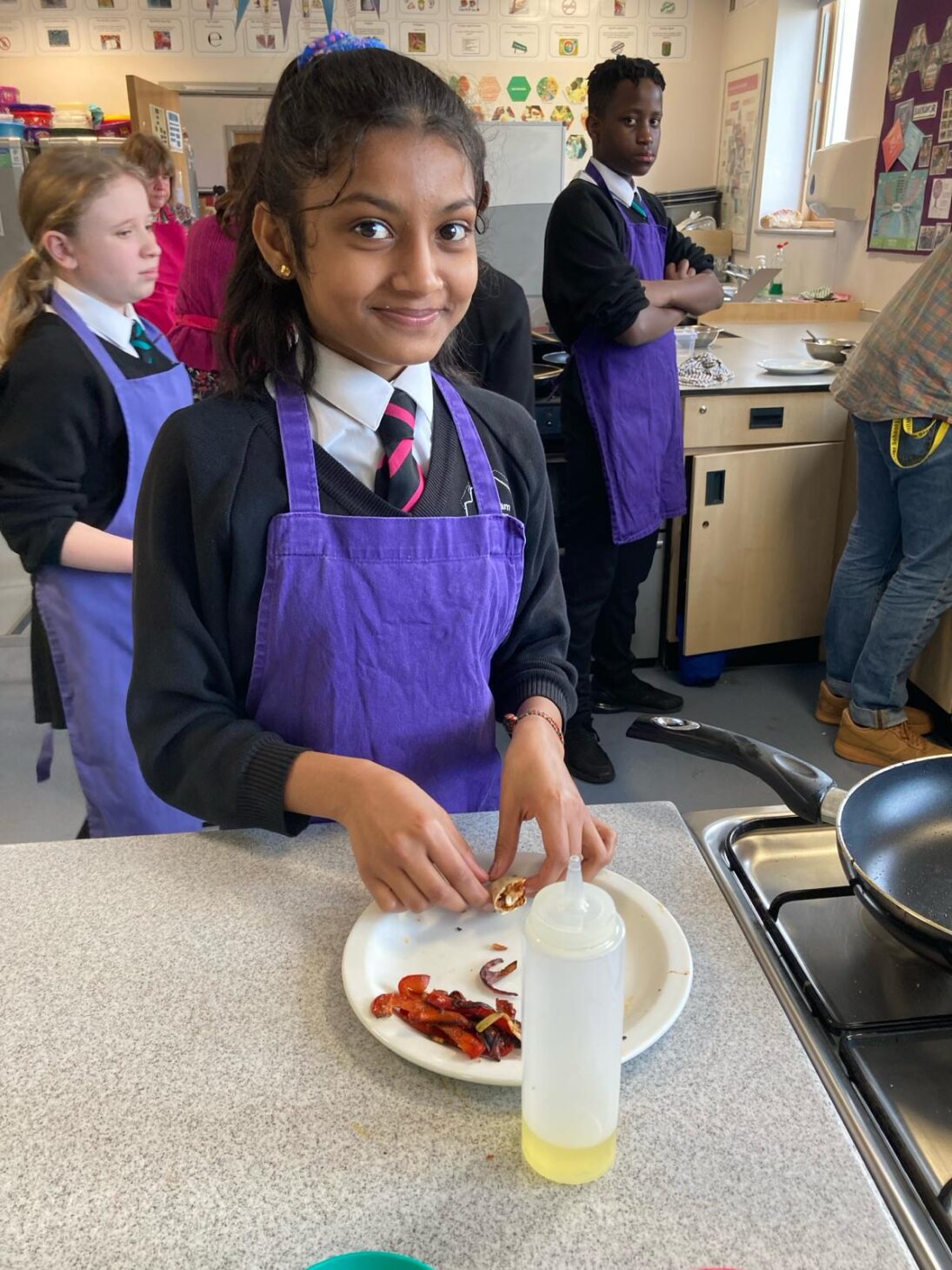10 Tops Tips for Parents to Get Kids Eating Well
04 August 2016

Most of us know that children who develop healthy eating habits early in life enjoy the immediate health benefits that come from a healthy diet. However, did you also know that an increasing amount of research now suggests what we eat as children and teenagers can affect our health as adults? It seems the benefits of a healthy diet as children can extend well into the future, leading to better health later in life.
So how can we help foster those healthy habits from a young age, and what can we do to overcome the challenges we face as parents when trying to encourage our kids to eat more fruits and vegetables? Bowel Cancer Australia chatted with a few everyday super mums (and dads) to find out what has worked for them to get their kids excited about all of the wonderful, plant-based foods our planet has to offer.
Tip 1. Give them a role Involve your children meal preparation such as getting things out of the fridge and helping with the easier parts of cooking meals, such as pouring and stirring, and encourage them to take pride in meal preparation by having them set the table. If you’re lucky enough to have room for a veggie patch, include your kids in planting and picking the produce. Your children will not only better understand where the food has come from, but it is also a great excuse to get outside in the fresh air and enjoy the garden.
Tip 2. Make it fun and educational Kids understand a lot more than we give them credit for. During the meal making process explain how the food is grown, produced and cooked. Talk about why we should eat well and how it makes us big, strong and healthy, providing us with the energy we need to play in the park or ride a bike.
Tip 3. Start them young Cook and feed your children a wide variety of fruits and vegetables from a young age. The more fruits and vegetables that become part of their daily routine, the less likely they are to groan when these foods appear on their plates when they’re older. Start exposing them to different things early and mix it up regularly.
Tip 4. Make it easy Keep a fruit bowl or veggie platter accessible so your children can help themselves whenever they’re looking for a snack, and be sure to include raw and cooked vegetables at meal time.
Tip 5. Lead by example If your children see you eating something, they are more likely to try it too. You can’t expect your kids to eat their veggies if they never see you do it. Set a great example by enjoying lots of different fruits and vegetables together as a family. There’s no need to create two separate meals.
Tip 6. Be flexible Consistently offer healthy foods and don’t give up. Kids will often say ‘no’ to something for days or weeks, and then suddenly it will be their new favourite.
Tip 7. Share the secret of what super heroes eat – ‘Superfoods’ Try to incorporate ‘superfoods’ wherever you can. They’re called ‘superfoods’ for a reason – they are super nutritious and can be very delicious. If your child decides to pass on the leafy greens, offer up some raw cacao nibs or dried goji berries.
Tip 8. Create a healthy alternative to a fast food favourite If your child loves milkshakes, try making a smoothie complete with a straw and served up in a fancy cup. Add some fruit (like berries or bananas) and add a dash of spinach or kale for extra colour and nutrition. When it’s all blended up the best flavours are what your child will taste, so be prepared to have enough on hand for seconds. Smoothies aren’t the only way to sneak some extra fruit and veg into your children’s meals. Grating vegetables and adding them to pasta sauce, muffins, meatballs or frittata can often work a treat. You can also do this with fruit by adding mashed, pureed or grated fruit into yoghurt and porridge.
Tip 9. Take them to the source If you have a local farmer’s market, take your child with you and taste what’s being grown in the area. Encourage your child to pick unfamiliar produce and let him or her buy a few things to try at home. Alternatively you can roam the produce aisles at your nearest supermarket. Challenge your child to identify fruits and vegetables that are different colours, or that grow on trees or in the ground. The ideas are endless and so is the fun!
Tip 10. Have a good time! The natural world has so much to offer when it comes to fruits and vegetables. With a wonderful variety of colours, flavours, shapes and sizes. Cooking and eating plant-based foods really does lend itself to fostering wonder and creativity. So have fun with your kids, and enjoy the fruit and veggie experience together. Explore where the fruits and vegetables come from and think of creative presentation idea that will give your kids a chance to use some of their artistic flair when creating their culinary masterpieces. A couple of simple ideas to get you started include making fruit kebabs or vegetable smiley faces. Younger children also love dipping, so cut up some veggie sticks and serve them up with a bowl of healthy dip.
Try out these tips and you may just find not only are your kids feeling healthier, but so are you! Meat Free Week creates a great opportunity to get people thinking about what they eat and its impact on their health. We encourage everyone to consider increasing fruit and vegetable intake as well as including grains, legumes and other healthy meat alternatives as part of their daily diet. For more information and great recipes, be sure to visit www.meatfreeweek.org/recipes.
About Rosanna Bluett
About



